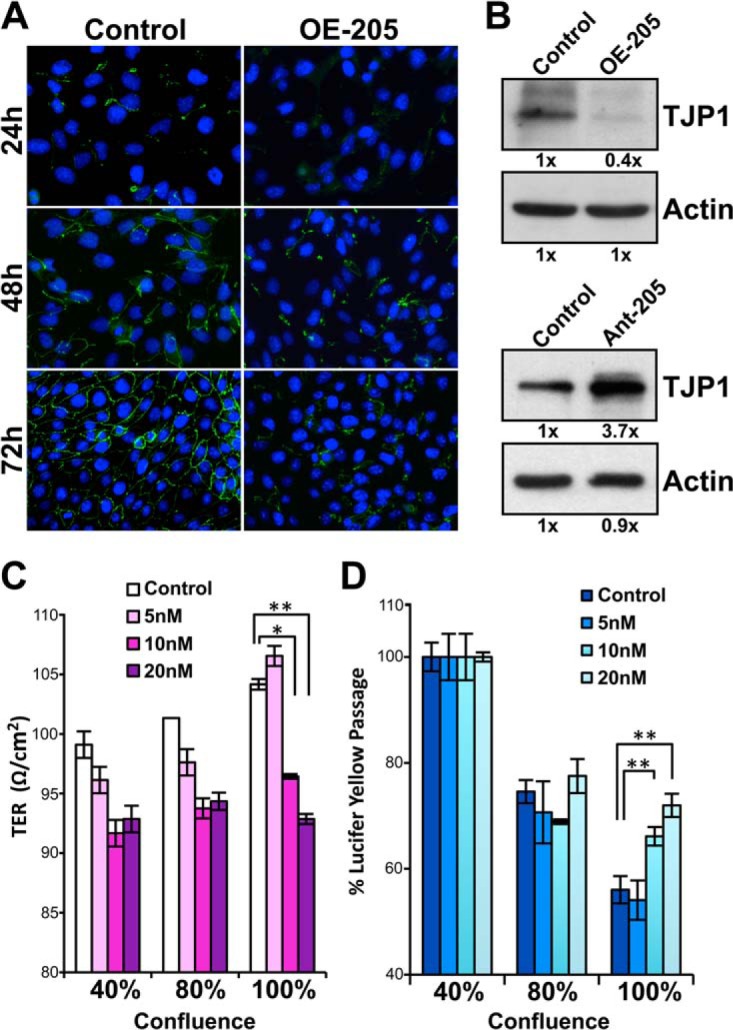Fig. 5.

Negative effects of miR-205 on tight junction formation and membrane integrity in MDCK cells. A, Tight junction was visualized by immunofluorescence staining with anti-ZO-1 antibody (green) at 24-, 48-, and 72-h post-transfected with the miR-205 precursors (OE-205) or the control dsRNA. Nuclei were stained with DAPI (blue). Note the prominent inhibition of ZO-1 expression by miR-205 in the 72-h post-transfection samples. B, miR-205-mediated altered the expressions ZO-1 were harvested 72-h post-treatment and verified by Western blot analyses showing that overexpression of miR-205 suppressed ZO-1 expression (upper panels), whereas knockdown of miR-205 increased the expression of ZO-1 (lower panels). C and D, miR-205 overexpressed cells showed a decrease of transepithelial electrical resistance (TER) (C) and an increased paracellular permeability to Lucifer Yellow (D) in MDCK monolayer. The TER was measured to determine the integrity of the MDCK monolayer and found a decrease from 104.2 ± 2.1 Ω/cm2 (control) to 96.4 ± 0.9 Ω/cm2 (10 nm), and 92.9 ± 0.1 Ω/cm2 (20 nm) in confluent cells, which represent 7.5% and 10.8% decrease over control (C). The Lucifer Yellow flux was increased by 16% (10 nm) and 23% (20 nm) of the permeation rate in miR-205 transfected cells than the control cells (D). For C and D, data are presented as means ± S.E. of three independent experiments, *p < 0.05, **p < 0.01, by Student's t test.
